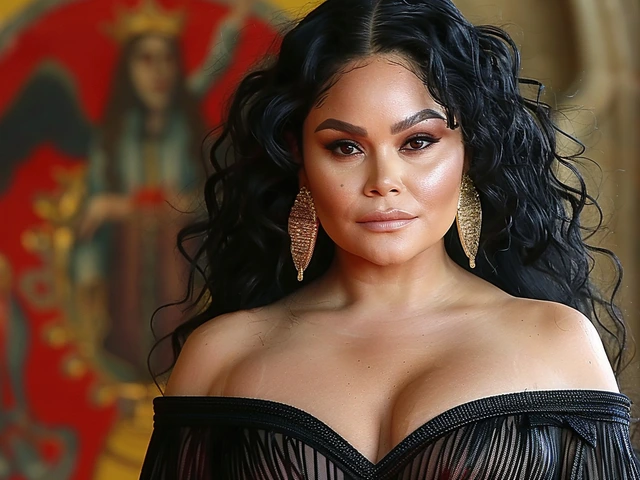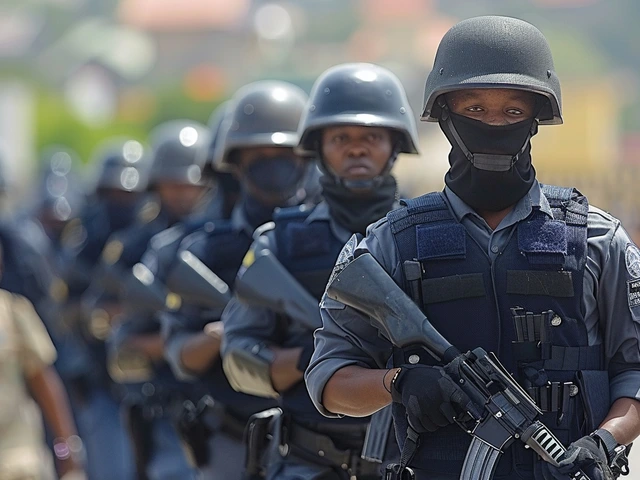Harlem Midnight Meeting: Malcolm X, Fidel Castro and the Roots of Global Liberation
Midnight on September 19 1960, Malcolm X and Fidel Castro met at Harlem's Hotel Theresa, forging a bond that still shapes modern Palestinian solidarity.
When you hear the name Fidel Castro, the former Cuban leader who ruled the island for nearly five decades. Also known as El Comandante, he emerged from a modest Havana background to become a symbol of anti‑imperialism and socialist experiment.
Castro’s rise is inseparable from the Cuban Revolution, the 1953‑1959 armed struggle that toppled Batista’s dictatorship. The revolution encompassed guerrilla warfare, popular mobilization, and a bold promise of land reform. It required a charismatic leader, a clear ideological guide, and a willingness to challenge entrenched power. Once in power, Castro reshaped the nation’s political and economic structures, nationalising foreign assets and aligning with the Soviet bloc.
That alignment thrust Cuba into the heart of the Cold War, the global standoff between the United States and Soviet Union from the late 1940s to 1991. Castro’s decision to adopt Marxist‑Leninist policies influenced superpower calculations, prompting events like the Bay of Pigs invasion and the Cuban Missile Crisis. The island became a testing ground for proxy conflict, showcasing how a small nation could sway the geopolitical chessboard.
Castro’s domestic agenda blended education, healthcare, and cultural development with strict political control. Literacy campaigns lifted Cuba’s adult literacy rate above 99 %, while universal healthcare reduced infant mortality to levels comparable with wealthier nations. Critics argue that these gains came at the cost of civil liberties, limited market activity, and prolonged economic hardship, especially after the Soviet Union collapsed. The duality of achievements versus repression creates a complex legacy that scholars still debate.
The US‑Cuba relations component shapes much of today’s discourse. From the 1960 trade embargo to recent diplomatic thaw attempts, each policy shift traces back to Castro’s stance against American interference. The embargo has forced Cuba to innovate in sectors like biotechnology, yet it also exacerbated shortages and limited foreign investment. Understanding this back‑and‑forth helps explain why the island’s economy remains both resilient and fragile.
Internationally, Castro positioned Cuba as a champion of the Global South, sending doctors to Africa and supporting revolutionary movements across Latin America. Those solidarity missions highlighted a foreign policy that prioritized ideological alignment over profit. While some view this as noble altruism, others see it as propaganda aimed at expanding influence.
In the cultural realm, Castro’s reign fostered a vibrant arts scene despite censorship. Musicians, writers, and filmmakers navigated a tightrope between state approval and creative expression, producing works that resonate worldwide. This cultural dynamism reflects the paradox of a controlled yet expressive society.
Today, the post‑Castro era grapples with questions of reform, generational change, and economic diversification. Younger Cubans push for greater internet access, private entrepreneurship, and political openness, while older generations reminisce about the social guarantees of the past. The tension between continuity and change defines contemporary Cuban politics.
Below, you’ll find a curated selection of articles that dig into Castro’s early guerrilla tactics, his health battles, the impact of his education policies, and how his legacy shapes modern Cuban-U.S. dialogue. Whether you’re looking for a deep dive into Cold War strategy or a quick overview of his economic reforms, the collection offers fresh angles and actionable insights to broaden your understanding of this pivotal figure.
Midnight on September 19 1960, Malcolm X and Fidel Castro met at Harlem's Hotel Theresa, forging a bond that still shapes modern Palestinian solidarity.

Nicki Minaj reports a livestream threat by TDE affiliate MackWop to the FBI and Congresswoman Anna Paulina Luna, turning a SZA feud into a federal investigation.

Vanessa Hudgens openly criticized the paparazzi for invading her privacy by capturing and publishing photos of her immediately after giving birth to her first child. She expressed her frustration on Instagram, emphasizing how her family's special moment was exploited. Hudgens confirmed the wellbeing of her family despite the unwanted media attention.

Singer Chike faces severe backlash from fans after gifting an online troll who insulted him. This has opened a wider debate on how celebrities handle online abuse and whether rewarding negative behavior is the right approach. Actress Toyin Abraham also announces legal action against trolls, adding to the conversation about handling online harassment.

The Anambra State Police Command has issued a strict warning against any Biafra Day celebrations on May 30, 2024. Responding to threats from IPOB, the Police assure the public that there will be no compulsory stay-at-home order and vow to secure the area. Citizens are encouraged to continue their usual activities as security forces are mobilized to ensure safety.

Lulu Sun and Donna Vekic prepare for a thrilling quarter-final showdown at Wimbledon on July 9, 2024, at Court 1. The match, starting at 12:00 PM, promises an exciting encounter between these skilled athletes. Fans can stay updated with live coverage and highlights on Eurosport.
